Ragnar Lodbrok
Ragnar Lodbrok
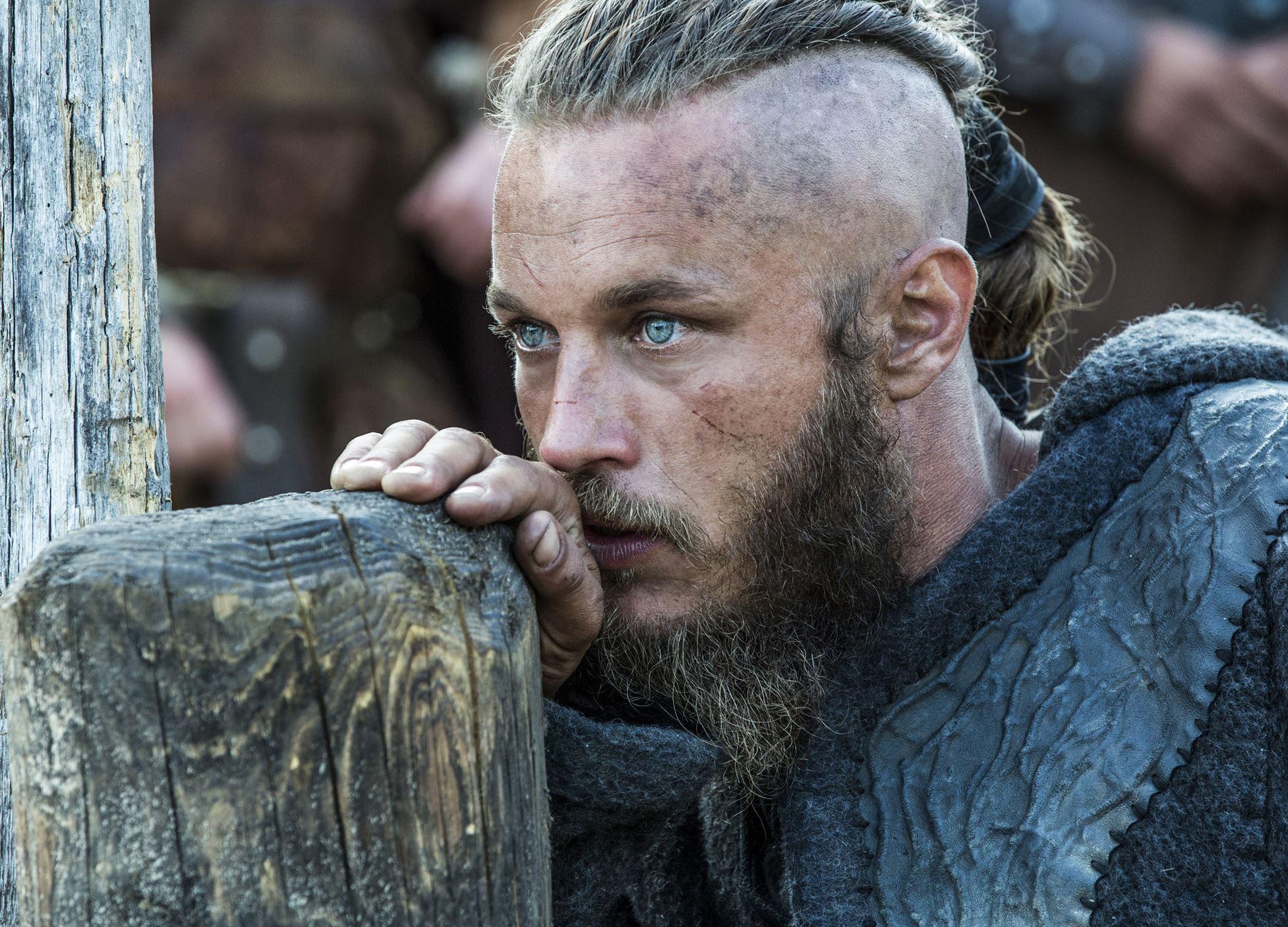
Ragnar Lodbrok, whose name translates to Ragnar hairy-breeches in Old Norse, is a legendary figure from Viking Age literature and sagas. He is depicted as a hero, warrior, and king of Swedish and Danish origin.
Accounts of Ragnar Lodbrok exploits are found in Old Norse poetry, Icelandic sagas, and chronicles from his time. According to these sources, Ragnar was renowned for leading numerous raids on the British Isles and the Carolingian Empire during the 9th century.
In Norse legends, Ragnar is often portrayed as a fearless and cunning leader who achieved great feats in battle and conquest. He is also featured in sagas such as the Tale of Ragnar's Sons and the Saga about Certain Ancient Kings. These sagas mention Ragnar's father as Sigurd Ring, a legendary king of the Swedes, further adding to the mythological lineage of Ragnar Lodbrok.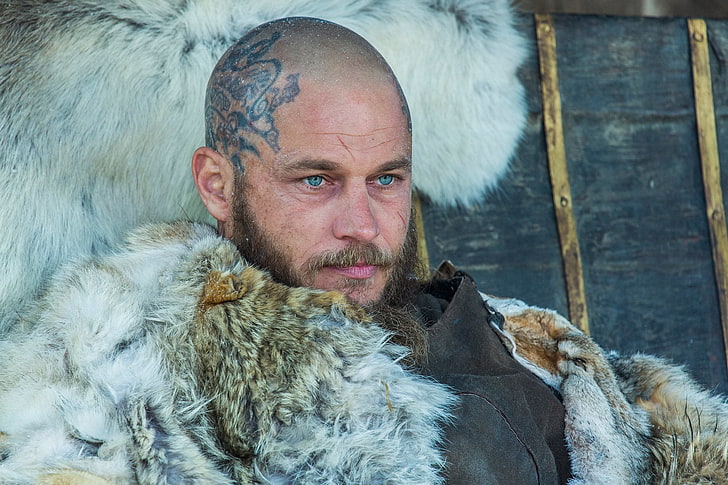
Ragnar Lodbrok's legendary lineage and exploits are recounted in various Icelandic sagas, including the Tale of Ragnar Lodbrok, Tale of Ragnar Sons, Heimskringla, Hervarar saga ok Heioreks, and Sögubrot af nokkrum fornkonungum.
According to these sources, Ragnar was believed to be the son of the Swedish king Sigurd Ring and the grandson of the Danish king Randver. Sigurd Ring's wife, Asa, was said to be the daughter of King Harald of the Red Moustache from Norway. Ragnar's lineage is traced back to the legendary Scandinavian king Ivar Vidfamne through his daughter Aud, who married Randver.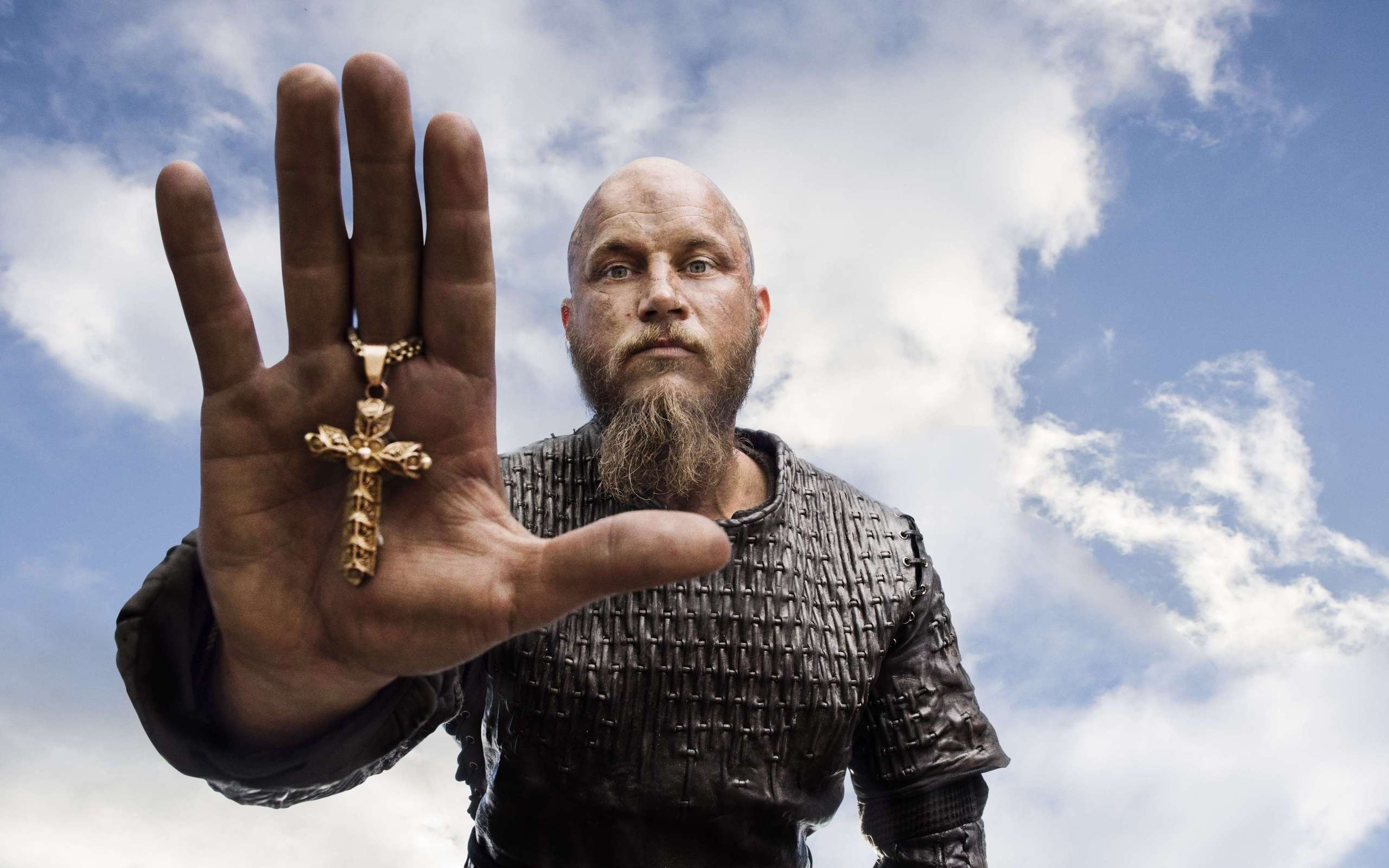
After the death of Ivar Vidfamne, Aud eldest son, Harald, became known as Harald Wartooth and conquered his grandfather's territory. Sigurd Ring, Ragnar's father, succeeded Randver and ruled Sweden and Denmark, possibly as a subking under Harald. Sigurd and Harald engaged in the Battle of the Bravellir, where Harald and many of his men perished, leading to Sigurd rule over both Sweden and Denmark.
Ragnar Lodbrok himself is described as a remarkable figure, known for his exceptional appearance and prowess. He is said to have married Thora Borgarhjort, with whom he had sons Erik and Agnar. After Thora death, Ragnar married Kráka, later revealed to be Aslaug, the daughter of Sigurd Fafnesbane. With Kraka, Ragnar fathered famous sons such as Ivar the Boneless, Björn Ironside, Hvitserk, Ragnvald, and Sigurd Snakeinthe Eye.
Ragnar ambition led him to attempt the conquest of England with only two ships. Despite his valor, he was defeated by English forces and famously thrown into a pit of snakes, where he met his demise. In revenge for their father's death, Ragnar's sons, known as the Great Heathen Army, invaded England, seeking vengeance against King ella of Northumbria, whom they held responsible for Ragnar execution.
The legendary figure of Ragnar Lodbrok is mentioned in various medieval sources, including the Chronicon Roskildense, Sven Aggesen's chronicle, and Saxo Grammaticus' Gesta Danorum. These sources provide different accounts of Ragnar lineage, exploits, and ultimate fate.
The Chronicon Roskildense, dated around 1138, mentions Ragnar as the father of the Norse King Ywar and his brothers, who are depicted as utterly cruel rulers. They lead northern peoples in attacking the realm of the Franks and successfully invade Britain, although revenge is not cited as their motive.
Sven Aggesen chronicle, circa 1190, is the first Danish text to mention Ragnar full name, Regnerus Lothbrogh. It describes Ragnar's son, Sigurd, invading Denmark and marrying the king's daughter, ultimately leading to the lineage of later Danish kings.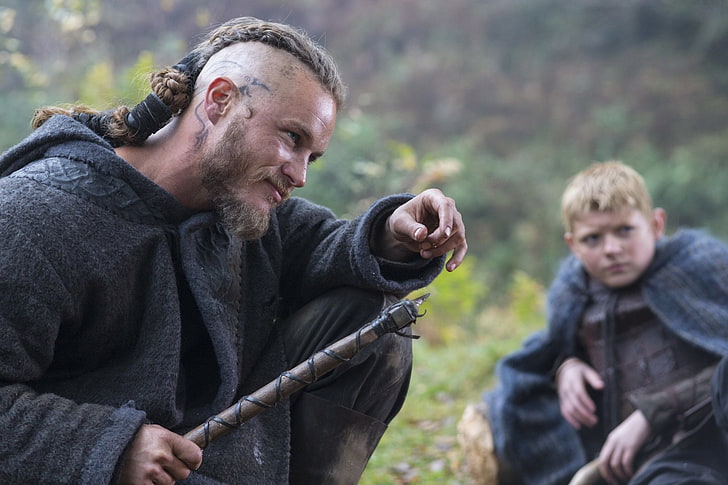
Saxo Grammaticus Gesta Danorum, composed around 1200, presents a more detailed narrative of Ragnar life. According to Saxo, Ragnar father is Sigurd Ring, a Norwegian prince married to a Danish princess. After Sigurd's death, Ragnar becomes the Danish king, succeeding his cousin Ring. Ragnar deeds include defeating the Swedish king Frö and marrying the shield maiden Lagertha, with whom he has children. He later marries Thora Borgarhjort and then Svanlaug, producing more offspring.
Ragnar's sons are installed as subkings in various territories, and Ragnar leads successful Viking expeditions to England, Scotland, Norway, and Sweden. However, he faces opposition from enemies like King Ella of Northumbria and Harald Klak. Ultimately, Ragnar is captured and executed by ella, meeting his end in a snake pit.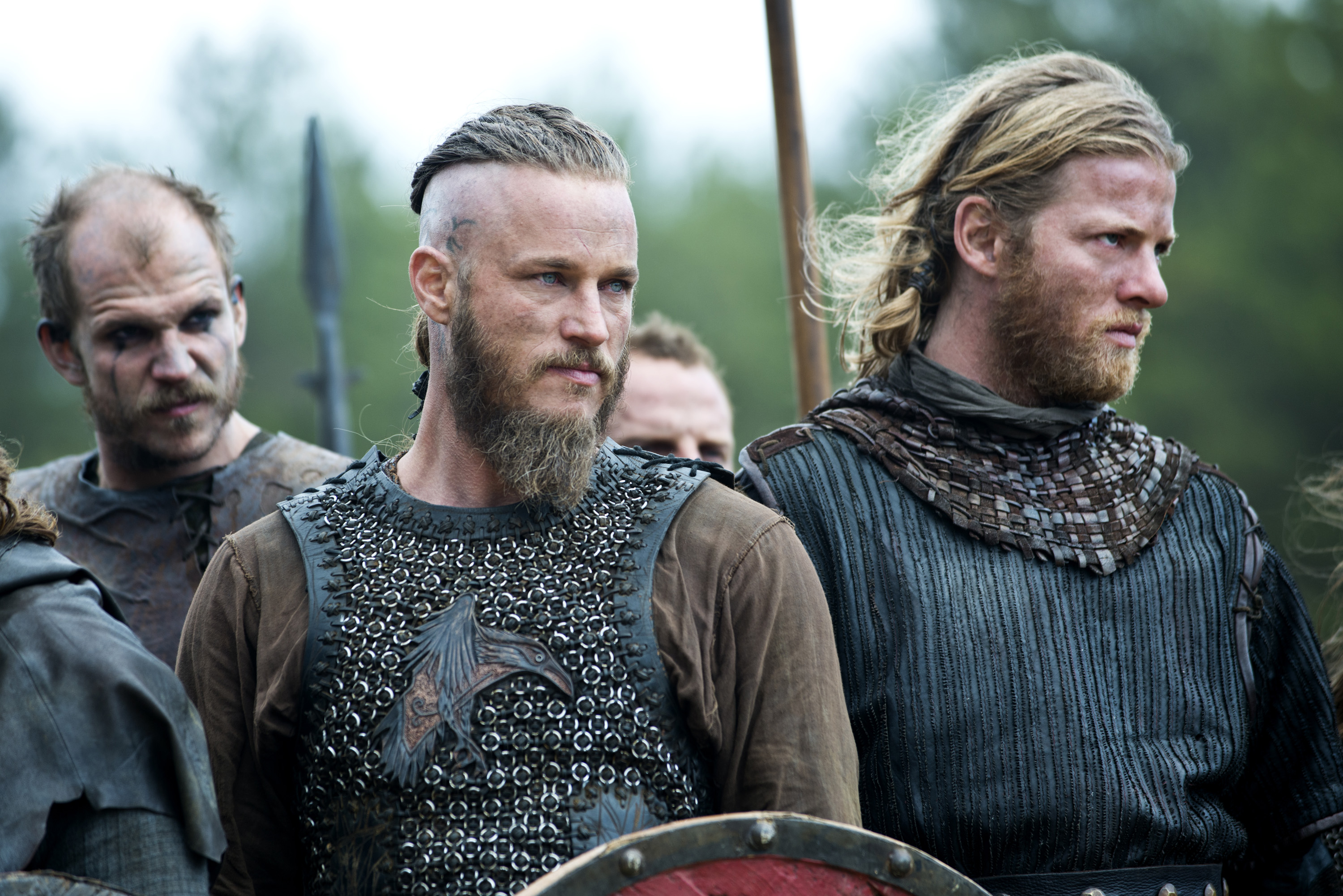
Saxo account emphasizes Ragnar's conquests and military prowess, portraying him as a successful Viking leader. However, it also depicts his downfall as a consequence of his disregard for Christianity, suggesting it as a divine punishment.
In addition to the narrative sources from the 12th and 13th centuries, there are also several older poems that mention Ragnar Lodbrok and his family, providing further insights into the legendary figure.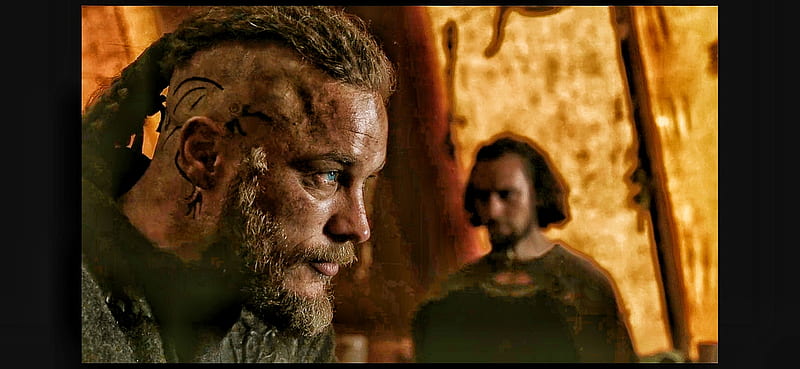
The Ragnarsdrapa, attributed to Bragi Boddason in the 9th century but possibly composed around 1000, praises a Ragnar, son of Sigurd, for a richly decorated shield. This shield depicts various legendary events, including the assault on Jörmunrek, the Hjaningavíg tale, the ploughing of Gefjon, and Thor's struggle with the Midgard Serpent. Some scholars interpret these depictions as symbolizing aspects of the Lodbrok saga, particularly events related to the Norse reconquest of England.
The Knutsdrapa of Sigvat Thordarson, dated to around 1038, mentions the death of King Ella at the hands of Ivar in York, with a reference to Ivar carving the eagle on Ella back. This suggests the presence of the revenge narrative involving Lodbrok's sons.
Another lay, Krakumal, attributed to the dying Ragnar in the snake pit, recounts Ragnar exploits and battles across various regions, including the British Isles. The poem's title, Kraka lay, refers to Ragnar's wife Kráka, though it is commonly dated to the 12th century in its present form.
A runic inscription on the prehistorical tumulus of Maeshowe on Orkney, dating to the early 12th century, mentions Lodbrok. The inscription describes the tumulus as built long before Lodbrok time and praises her sons, suggesting the possibility that Lodbrok was originally conceived as a female figure, perhaps the mother of the legendary sons mentioned in the saga material.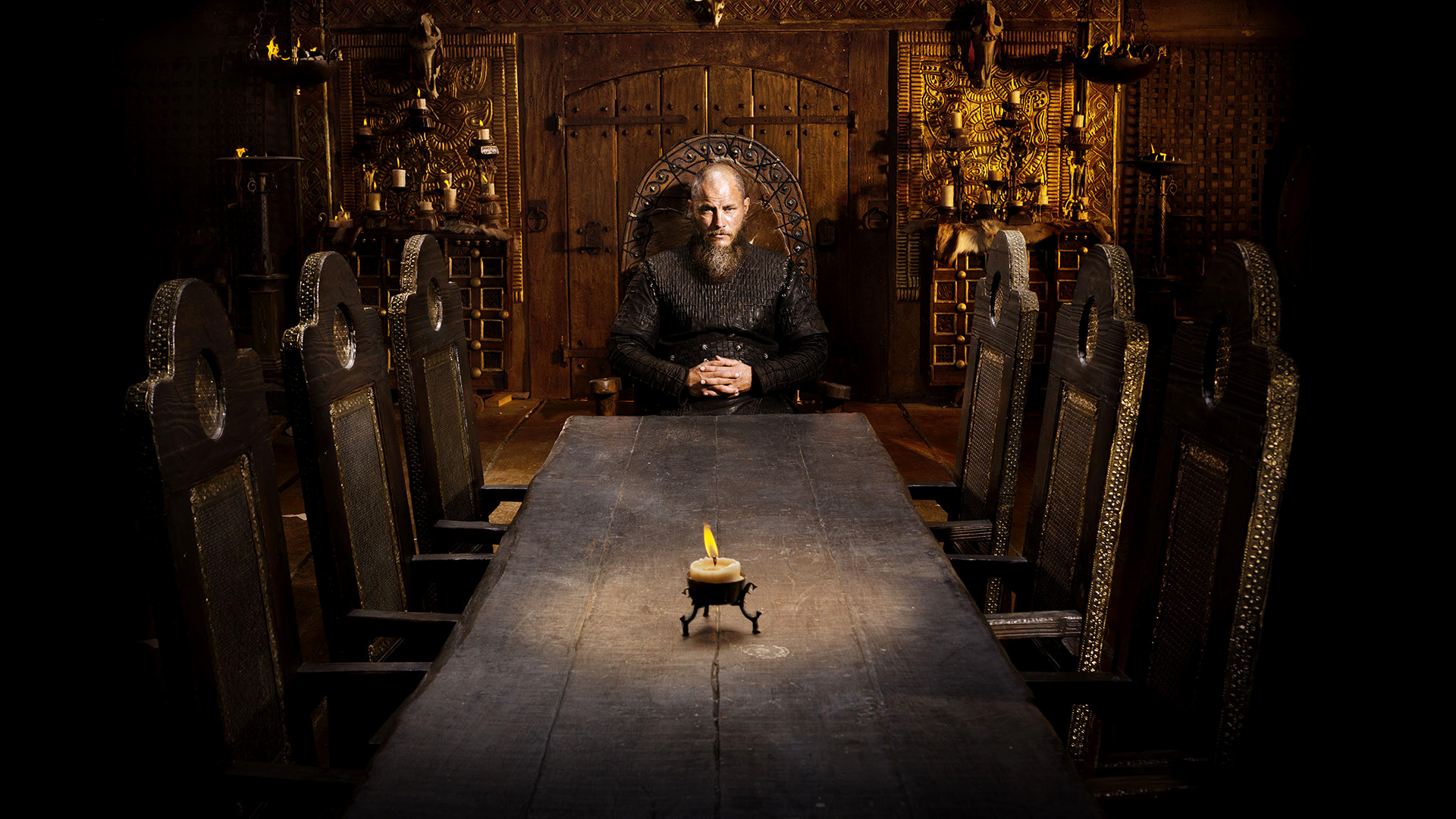
The Siege of Paris and the subsequent Sack of Paris in 845 marked a significant event during the Viking invasion of the kingdom of the West Franks. The Viking forces, led by a Norse chieftain named Reginherus or Ragnar, launched a raid on Paris. While Ragnar is often tentatively identified with the legendary saga figure Ragnar Lodbrok, historians dispute the accuracy of this association.
During the raid, Ragnar's Vikings attacked Rouen as they sailed up the Seine River towards Paris. In response to the invasion, King Charles the Bald of the West Franks assembled an army to defend Paris. He divided his forces into two parts, positioning them on each side of the Seine River.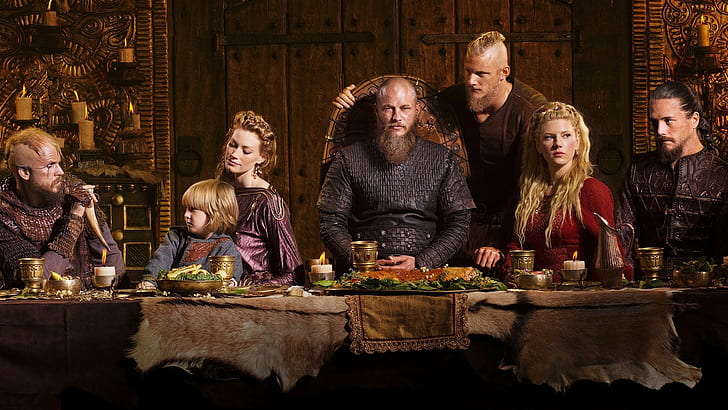
Ragnar engaged one of the divisions of the smaller Frankish army and emerged victorious, taking 111 prisoners. He then proceeded to hang them on an island on the Seine as a sacrifice to the Norse god Odin and to instill fear in the remaining Frankish forces.
After the raid, Ragnar's fleet returned to Denmark, where he served under his overlord, King Horik I. However, Ragnar succumbed to a violent illness that also affected Denmark, leading to his death shortly after the raid on Paris.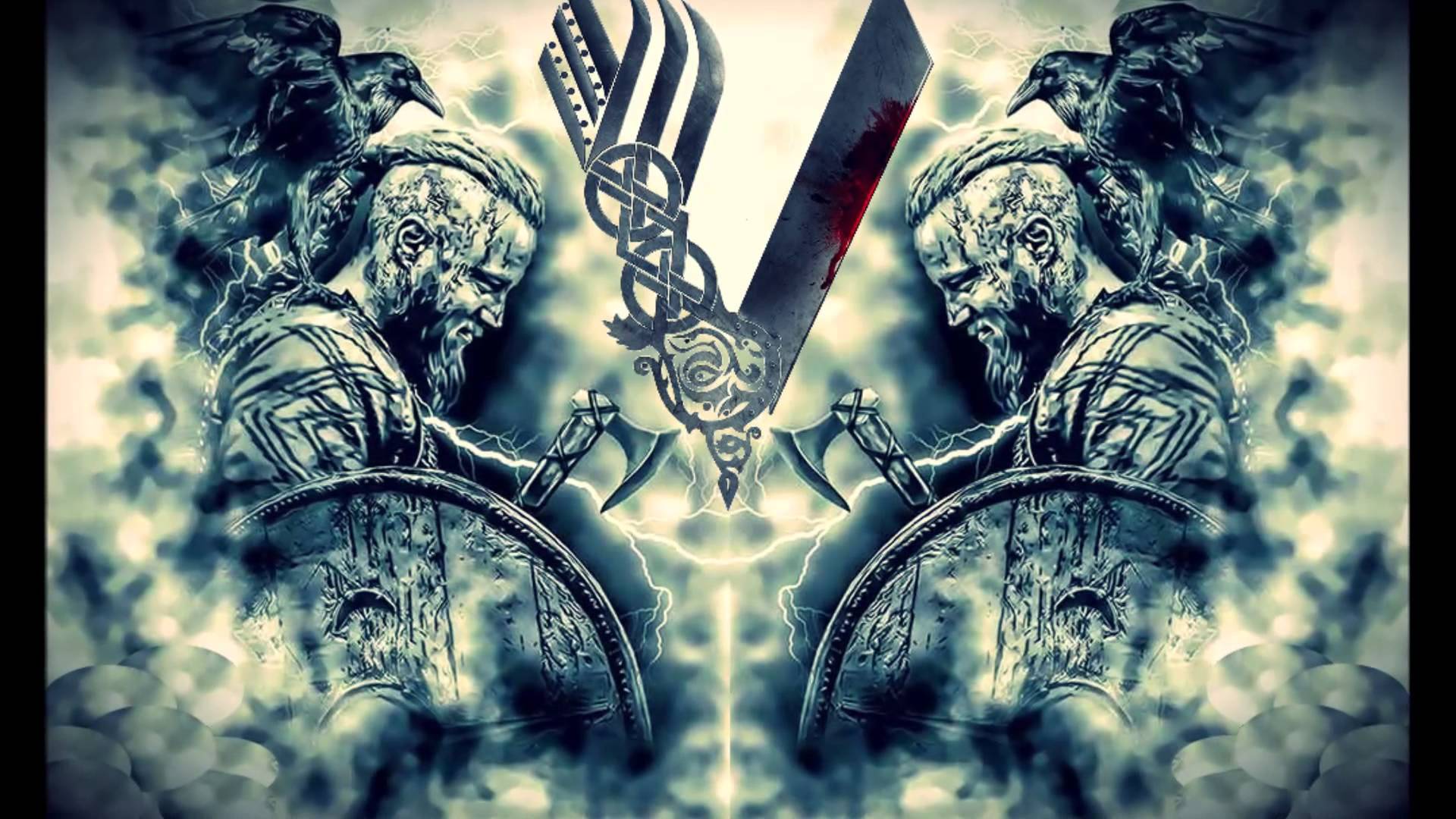
References
- Hughes, David (2007). The British Chronicles. Vol. 1. Heritage. p. 274. ISBN 978-0-7884-4490-6.
- ^ Harrison 1993, p. 16.
- ^ Du Chaillu, Paul B. (2015). The Viking Age Vol. 2 (of 2) (Illustrations): The early history, manners, and customs of the ancestors of the English-speaking nations. The Viking Age Series. J.J. Little & Co. p. 291. ISBN 978-0599543584. Archived from the original on 5 April 2023. Retrieved 1 June 2020. Gutenberg Project version Archived 28 January 2020 at the Wayback Machine, published 13 December 2017.
- ^ Sögubrot 1200.
- ^ Lindbergh, Katarina Harrison (2017). Nordisk mytologi: Från a till Ö. Svenska Historiska Media Förlag. ISBN 978-9175453705. Archived from the original on 5 April 2023. Retrieved 20 October 2020.
- ^ Butler, Josh "The Real Ragnar Lothbrok." Archived 20 February 2020 at the Wayback Machine Historic UK. Retrieved 21 April 2020.
- ^ McTurk (1991) Studies in 'Ragnar's Saga Lodbrokar' and Its Major Scandinavian Analogues. Society for the Study of Mediaeval Languages Lit. p. 10, 15, 36, 37
- ^ Tolkien, Christopher; Turville-Petre, G., eds. (1956). "Hervarar Saga ok Heidreks" (PDF). Viking Society for Northern Research. London: 68–9. Archived (PDF) from the original on 1 August 2019. Retrieved 20 October 2019.
- ^ "Sögubrot, Chapter 10". Archived from the original on 8 September 2010.
- ^ "The Tale of Ragnar's Sons, Chapter 2". Germanicmythology.com. Archived from the original on 22 September 2013. Retrieved 20 October 2019.
- ^ "Stories for all time: The Icelandic fornaldarsögur". Fasnl.ku.dk. Archived from the original on 23 February 2022. Retrieved 28 February 2022.
- ^ "fornaldarsögur, chapter 25". Researchgate.net.
- ^ " Sögubrot, Chapter 10". Archived from the original on 8 September 2010.
- ^ "Ragnars Saga Lodbrokar, Chapters 4 and 7". Archived from the original on 25 October 2019. Retrieved 25 October 2019.



































